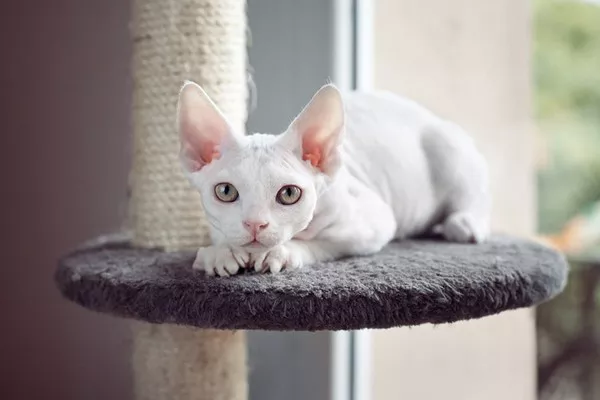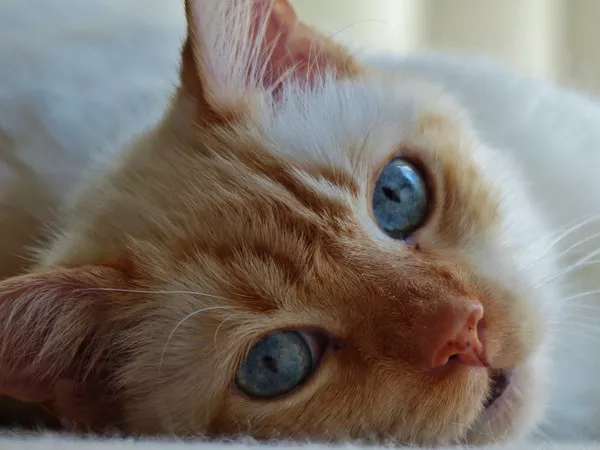Chartreux cats, with their distinctive blue-gray fur and affectionate nature, are a beloved breed among cat enthusiasts. However, like all cats, Chartreux cats have natural instincts to scratch and mark their territory, which can lead to damage to furniture and other household items. In this comprehensive guide, we’ll explore the topic of Chartreux cat scratch furniture, including the reasons behind scratching behavior, effective training tips to discourage unwanted scratching, and strategies for protecting your furniture from damage.
Understanding Chartreux Cat Scratching Behavior
Before we delve into training tips and strategies, it’s essential to understand why Chartreux cats scratch furniture in the first place. Scratching is a natural and instinctive behavior in cats that serves several purposes, including:
1. Territory Marking
Cats have scent glands in their paw pads that release pheromones when they scratch, leaving behind scent markers that signal their presence to other cats. By scratching furniture and other objects, Chartreux cats are essentially marking their territory and establishing ownership over their surroundings.
2. Nail Maintenance
Scratching helps cats remove the outer sheath of their claws, exposing the sharp, healthy claws underneath. Regular scratching helps keep a cat’s claws sharp and functional, allowing them to engage in essential activities such as climbing, hunting, and self-defense.
3. Stretching and Exercise
Scratching also provides cats with a form of physical exercise and helps them stretch their muscles and tendons. Cats often engage in scratching as part of their daily routine to maintain flexibility and relieve stress.
Training Tips to Discourage Unwanted Scratching
While scratching is a natural behavior in cats, it’s essential to provide appropriate outlets for scratching and to discourage unwanted scratching behavior on furniture. Here are some effective training tips to help deter Chartreux cats from scratching furniture:
1. Provide Scratching Posts and Pads
Offering your Chartreux cat plenty of scratching posts and pads throughout your home provides them with appropriate outlets for scratching. Choose scratching posts and pads made from sturdy materials such as sisal rope or corrugated cardboard, as these textures are appealing to cats and help sharpen their claws effectively.
2. Encourage Positive Reinforcement
Encourage your Chartreux cat to use scratching posts and pads by rewarding them with treats, praise, or playtime whenever they use these designated scratching surfaces. Positive reinforcement helps reinforce desired behavior and encourages cats to continue using scratching posts instead of furniture.
3. Use Deterrents
Deter unwanted scratching behavior on furniture by using deterrents such as double-sided tape, aluminum foil, or commercial sprays designed to discourage scratching. Apply these deterrents to furniture surfaces that your cat tends to scratch, as the unpleasant textures or scents can help deter them from scratching in those areas.
4. Redirect Scratching Behavior
If you catch your Chartreux cat in the act of scratching furniture, gently redirect their attention to a nearby scratching post or pad. Encourage them to use the designated scratching surface by gently guiding their paws and offering praise or treats when they comply.
Protecting Your Furniture from Damage
In addition to training your Chartreux cat to use scratching posts and pads, there are several strategies you can use to protect your furniture from damage:
1. Use Furniture Covers or Protectors
Cover or protect furniture surfaces that your cat tends to scratch with durable covers or protectors made from materials such as plastic, vinyl, or upholstery-grade fabric. These protective covers can help shield furniture from scratches and damage while you work on training your cat to use scratching posts.
2. Trim Your Cat’s Claws Regularly
Regularly trimming your Chartreux cat’s claws can help minimize damage to furniture by keeping their claws shorter and less sharp. Use a pair of cat-specific nail clippers to trim the tips of your cat’s claws every few weeks, being careful not to cut into the quick, which can cause pain and bleeding.
3. Provide Alternative Surfaces
Offer alternative surfaces for your Chartreux cat to scratch, such as cardboard scratching boxes, carpeted scratching ramps, or vertical scratching posts. Experiment with different textures and configurations to find the options that your cat prefers, and place them strategically throughout your home to encourage use.
4. Consider Nail Caps
If your Chartreux cat continues to scratch furniture despite your best efforts, consider using soft nail caps to cover their claws temporarily. Nail caps are small, flexible covers that adhere to the claws with pet-safe adhesive, providing a barrier between the claws and furniture surfaces.
Conclusion: Promoting Healthy Scratching Habits in Chartreux Cats
In conclusion, while Chartreux cats may naturally engage in scratching behavior as a way to mark territory, maintain their claws, and exercise, it’s essential to provide appropriate outlets for scratching and to discourage unwanted scratching on furniture. By implementing effective training tips and strategies, such as providing scratching posts, using positive reinforcement, and protecting furniture surfaces, cat owners can help promote healthy scratching habits in Chartreux cats while preserving their furniture and maintaining a harmonious home environment. With patience, consistency, and proper training, you can teach your Chartreux cat to scratch in appropriate places and enjoy a happy, scratch-free home together.






















